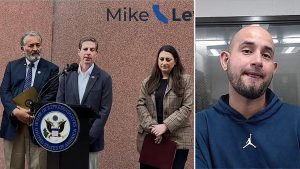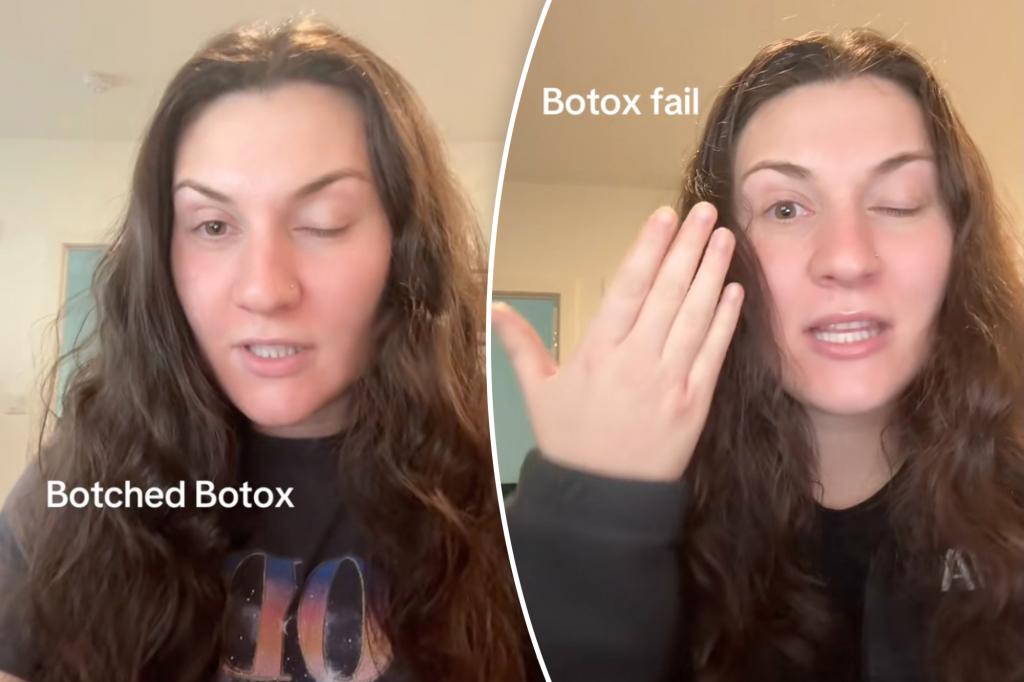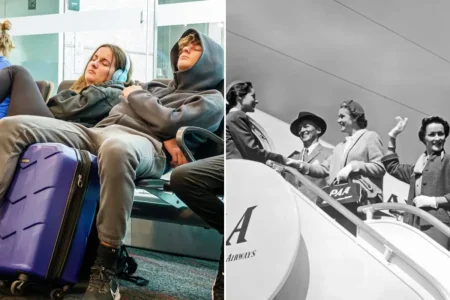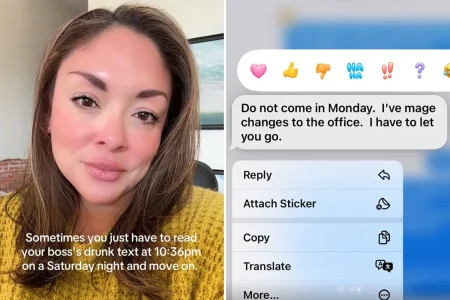When Botox Goes Awry: One Woman’s Unexpected Journey with a Drooping Eyelid
Lydia August never imagined her routine Botox treatment for chronic migraines would lead to viral fame—certainly not the kind that comes from having one eye mysteriously stuck shut. In a series of candid TikTok videos that have captured the internet’s attention, August faced her predicament with remarkable humor, asking viewers, “Are you having a bad day? I bet you mine’s worse.” Her left eyelid had become completely immobile following her treatment, and according to her doctor, this unexpected side effect could potentially last up to three months. With characteristic wit, she joked, “Catch me winking at you for the next 12 weeks,” turning what could have been a devastating cosmetic mishap into a moment of relatable human vulnerability. The internet responded in kind, with viewers suggesting she “assert dominance and rock an eye patch,” to which August playfully replied she might have to be “a pirate for Halloween.” Her ability to find humor in a genuinely frustrating situation resonated with thousands online, creating a community around her experience.
What August is experiencing has a medical name—ptosis, or drooping eyelid—which is a known but rare side effect of Botox injections, particularly when administered for migraines. This condition occurs when the botulinum toxin inadvertently weakens the muscles responsible for lifting the eyelid, causing it to partially or completely close. While August didn’t share specific details about her procedure, she did mention that her regular neurologist administered the injections, suggesting this wasn’t a case of seeking treatment from an unqualified provider. Viewers in the comments section quickly became amateur medical detectives, theorizing that the injector might have accidentally hit the muscle controlling her eyelid, temporarily paralyzing it. While these theories remain unconfirmed, they highlight how common knowledge about cosmetic procedures has become in our society, where millions receive such treatments annually.
The science behind August’s condition reveals the delicate nature of Botox treatments, especially when administered near the face’s intricate muscular structure. Botox injections for migraines typically target areas around the forehead, temples, and back of the head. However, if the injection accidentally spreads to nearby muscles or is placed incorrectly, it can affect unintended areas—in this case, weakening the muscles that control eyelid movement. The good news for August is that ptosis is almost always temporary, typically resolving within two to six weeks as the Botox gradually wears off. Medical professionals often recommend specialized eye drops that can temporarily tighten the affected muscle and help lift the drooping eyelid. Some doctors even suggest gentle massage of the area, though this should only be done under professional guidance to avoid complications or spreading the toxin to other muscles.
The human element of August’s story extends beyond her personal experience to the community that formed around her viral moment. Viewers didn’t just watch and laugh—they engaged, offered support, and shared their own experiences with Botox gone wrong. This collective response demonstrates how social media can transform individual medical mishaps into shared learning experiences. Some commenters offered practical advice, suggesting cardiovascular exercise might help the Botox wear off faster: “Do TONS of cardio, it makes Botox last way less,” wrote one viewer. Others recommended alternative remedies: “Put castor oil on it! I unknowingly used castor oil on my face after Botox, and it dissolved the Botox in like three weeks.” Another shared, “I had a half drop and used a Nuface microcurrent device a few times a day. It helped wear off the Botox more quickly.” While medical validation of these home remedies remains pending, the eagerness to help highlights the supportive communities that can form even around uncomfortable circumstances.
August’s experience also opens a window into the broader conversation about cosmetic procedures and their risks. While she was using Botox therapeutically for migraine treatment—a FDA-approved use since 2010—her situation reminds us that even common medical procedures carry potential side effects. Botox injections have become increasingly normalized in our culture, with millions of procedures performed annually for both medical and cosmetic purposes. This normalization sometimes obscures the fact that botulinum toxin is indeed a powerful neurotoxin that works by temporarily paralyzing muscles. Most patients experience only the intended effects, but August’s story serves as a gentle reminder that unexpected outcomes can occur even with experienced practitioners. The transparency with which she shared her experience contributes valuable real-world education about these procedures that complement the clinical warnings patients receive before treatment.
While August’s drooping eyelid will eventually resolve without permanent damage, her story serves as a counterpoint to more serious complications that can arise from injectable treatments. Medical professionals emphasize that choosing qualified, experienced providers is crucial for minimizing risks. August’s decision to share her experience publicly—transforming what could have been an isolating medical mishap into a moment of connection and humor—demonstrates remarkable resilience. Through her videos, she’s normalized talking about cosmetic procedure complications while simultaneously detaching personal worth from temporary physical appearance changes. As viewers continue to follow her recovery journey, August’s experience stands as a testament to human adaptability and the healing power of community support and humor. In transforming her unexpected wink into a winsome story, she reminds us all that even in our most vulnerable moments, finding humor and connection can be the most effective medicine of all.















